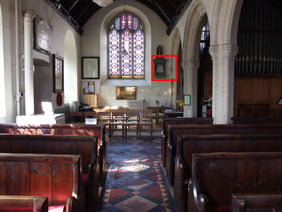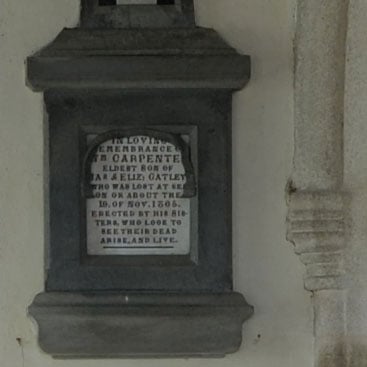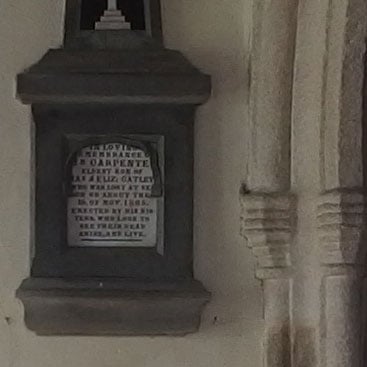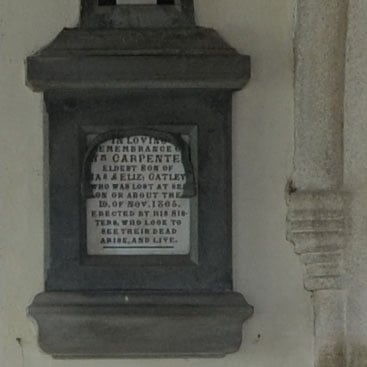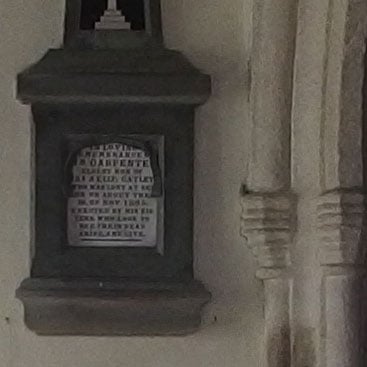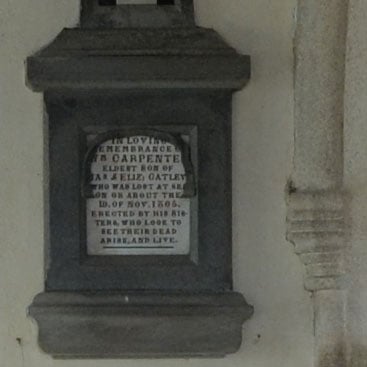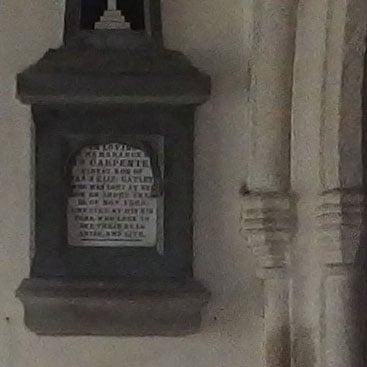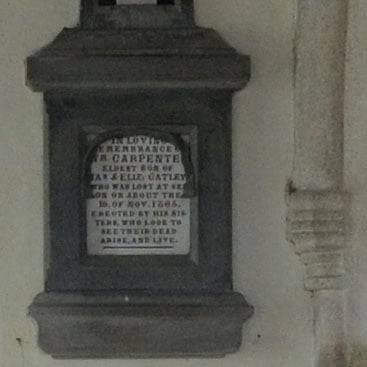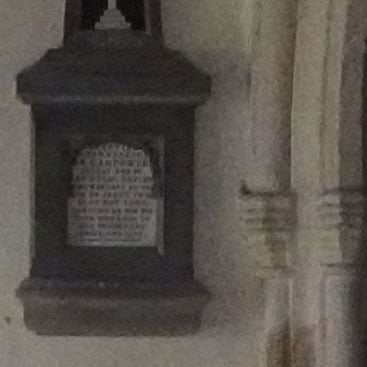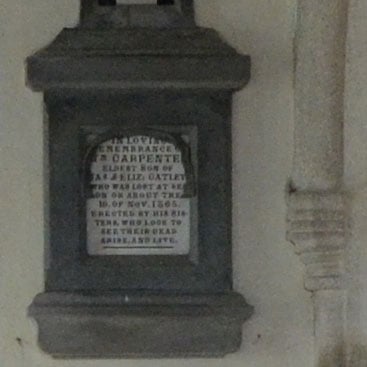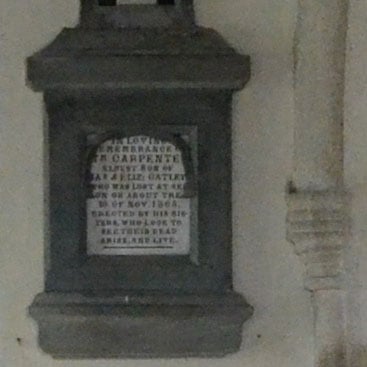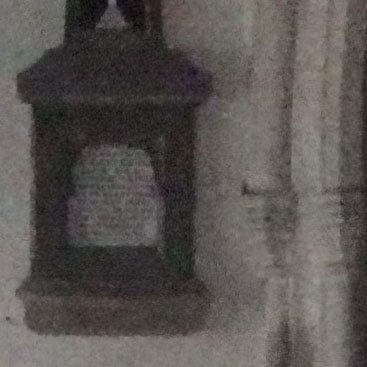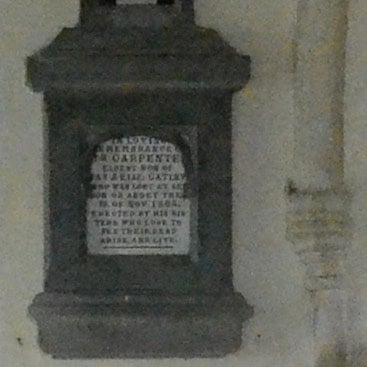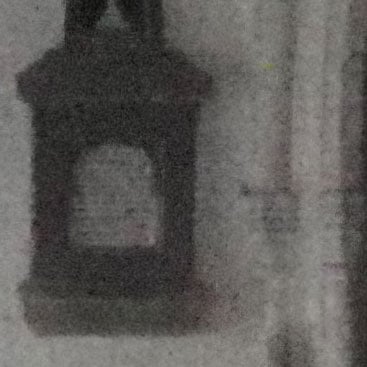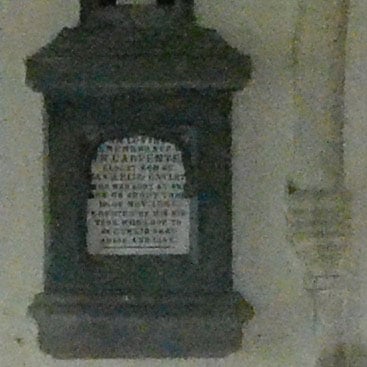Olympus XZ-2 review
-
-
Written by Ken McMahon
Quality
Olympus XZ-2 vs Nikon COOLPIX A Quality JPEG
|
Olympus XZ-2 JPEG |
Nikon COOLPIX A JPEG | |
 |  | |
f4, 100 ISO |
f5.6, 100 ISO | |
 |  | |
f4, 100 ISO |
f5.6, 100 ISO | |
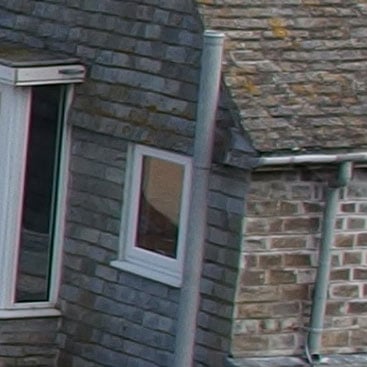 | 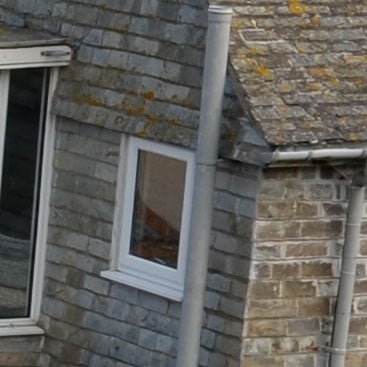 | |
f4, 100 ISO |
f5.6, 100 ISO | |
 | 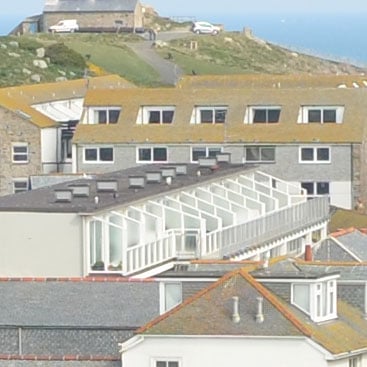 | |
f4, 100 ISO |
f5.6, 100 ISO |
Olympus Stylus XZ-2 results : Quality / RAW quality / Noise / RAW Noise
Olympus XZ-2 vs Nikon COOLPIX A Quality RAW
|
Olympus XZ-2 RAW |
Nikon COOLPIX A RAW | |
 |  | |
f4, 100 ISO |
f5.6, 100 ISO | |
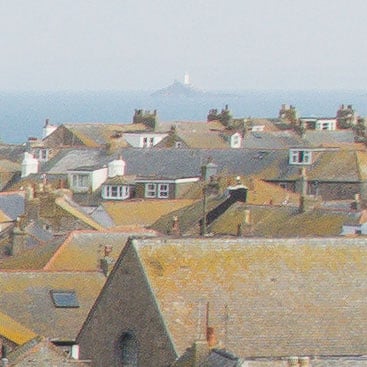 |  | |
f4, 100 ISO |
f5.6, 100 ISO | |
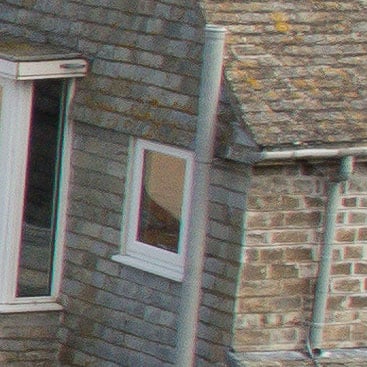 | 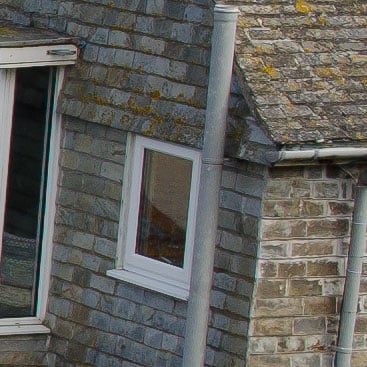 | |
f4, 100 ISO |
f5.6, 100 ISO | |
 | 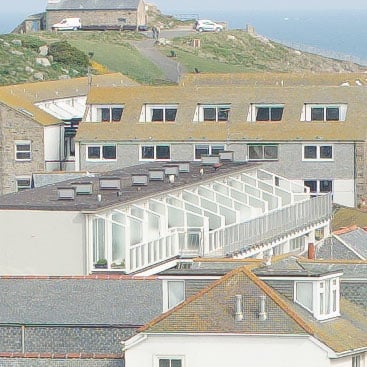 | |
f4, 100 ISO |
f5.6, 100 ISO |
Olympus Stylus XZ-2 results : Quality / RAW quality / Noise / RAW Noise
Olympus XZ-2 vs Nikon COOLPIX A Noise RAW
Olympus Stylus XZ-2 results : Quality / RAW quality / Noise / RAW Noise |
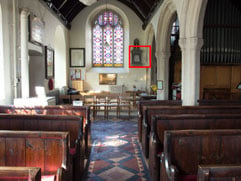 | To compare RAW noise levels under real-life conditions, I shot this scene with the Olympus Stylus XZ-2 and the Nikon COOLPIX A, within a few moments of each other at each of their ISO sensitivity settings. The XZ-2 was set to its maximum 28mm wide angle focal length, matching the 28mm fixed focal length lens of the COOLPIX A. Image stabilisation on the Stylus XZ-2 was disabled for this tripod-mounted test. All other camera settings were left on the defaults |
The image above was taken with the Olympus Stylus XZ-2. I’d pre-tested both cameras to determine the aperture that delivered the best quality results, for the Stylus XZ-2 it was f4 with the COOLPIX A producing the best quality images at f5.6. At its base sensitivity setting of 100 ISO the COOLPIX A metered an exposure of 1/4. In order to produce an equivalent exposure on the XZ-2 I applied +0.3EV exposure compensation resulting in a shutter speed of 1/8 also at 100 ISO. As usual both cameras were otherwise left on their default settings.
I processed both sets of files in Adobe Camera RAW using identical settings: Sharpening at 70 / 0.5 / 36 / 10, Luminance and Colour Noise Reduction both set to zero, and the Process to 2012 with the Adobe Standard profile.These settings were chosen to reveal the differences in sensor quality and isolate them from in-camera processing. The high degree of sharpening with a small radius enhances the finest details without causing undesirable artefacts, while the zero noise reduction unveils what’s really going on behind the scenes – as such the visible noise levels at higher ISOs will be much greater than you’re used to seeing in many of my comparisons, but again it’s an approach that’s designed to show the actual detail that’s being recorded before you start work on processing and cleaning it up if desired.
These RAW processed crops confirm what we saw with the in-camera JPEGs. The Stylus XZ-2 sensor produces a small amount of noise at its base 100 ISO setting. This isn’t a problem in itself but for each stop increase in the sensitivity, the margin of increase in the noise is quite large with the result that, even at the relatively low 800 ISO sensitivity, the noise is already becoming a problem. With noise at these levels, even with the best noise reduction tools at your disposal, it’s going to be a difficult task to produce clean, noise free, highly detailed results from XZ-2 RAW files above 800 ISO.
The larger sensor of the COOLPIX A is generating less noise all the way up the ISO sensitivity range, though, meaning there’s less work for noise processing algorithms to do and better quality results. This is particularly true at the lower end of the sensitivity range where from 100 to 800 ISO the sensor produces very low levels of noise with linear increments at each 1EV increase in sensitivity. As high as 6400 ISO, while there’s plenty of noise around it’s quite fine and isn’t clumping, with the result that edges aren’t breaking up and you can still just about read the text.
What this shows is that, in terms of noise performance, a compact with a big sensor, can significantly out perform one with a smaller one. That’s no big surprise, but the COOLPIX A also manages to provide an additional 4 Megapixels of resolution over the Olympus XZ-2 as well managing to cram it all in to a smaller, lighter body.
It is however important to remember the XZ-2 has a brighter aperture than the COOLPIX A, and when both are set to 28mm equivalent coverage, the XZ-2 enjoys a stop and a third greater light gathering power. So if both cameras were using their maximum apertures and the same shutter speed, then the Nikon COOLPIX A would be forced to select a sensitivity just over double that of the XZ-2. So in the spirit of fairness, you should shift the XZ-2 results down a notch in the table below so that the 100 ISO sample is next to the Nikon at 200 ISO and so on. That said though, the larger sensor of the COOLPIX A quickly eliminates the benefits of a brighter lens on its rival.
Now head over to my Olympus Stylus XZ-2 sample images to see some more real-life shots in a variety of conditions, or head straight for my Verdict.
Olympus XZ-2 RAW |
Nikon COOLPIX A RAW | |
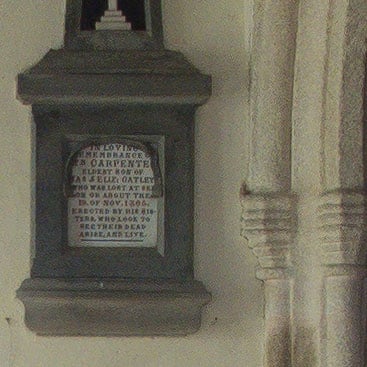 | 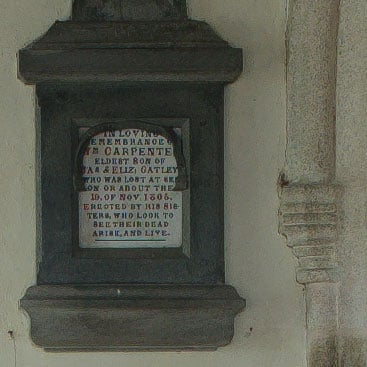 | |
f4 100 ISO |
f5.6 100 ISO | |
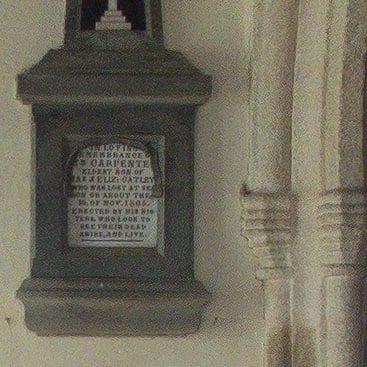 | 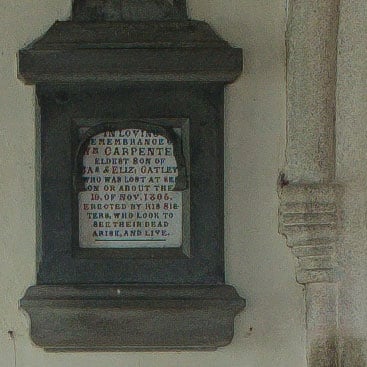 | |
f4 200 ISO |
f5.6 200 ISO | |
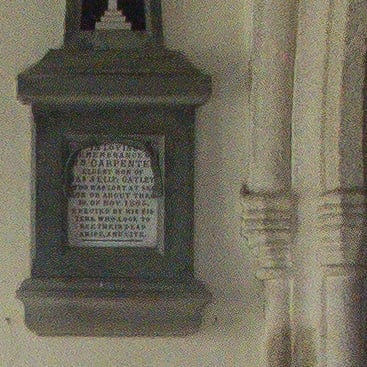 | 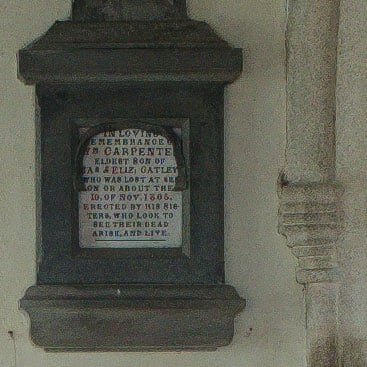 | |
f4 400 ISO |
f5.6 400 ISO | |
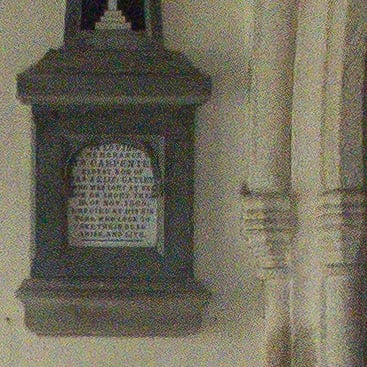 | 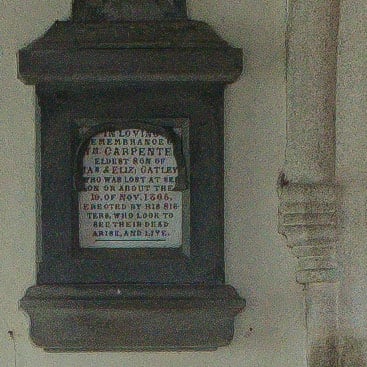 | |
f4 800 ISO |
f5.6 800 ISO | |
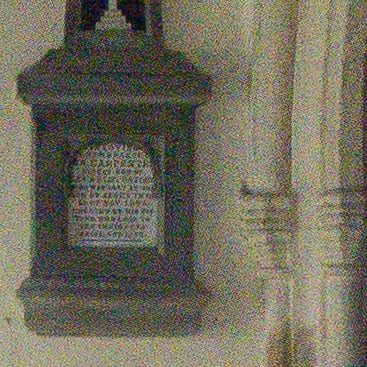 | 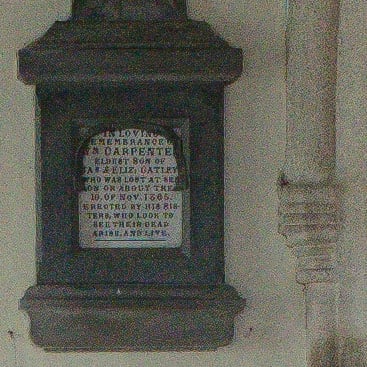 | |
f4 1600 ISO |
f5.6 1600 ISO | |
 | 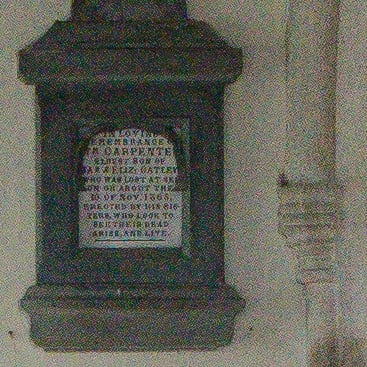 | |
f4 3200 ISO |
f5.6 3200 ISO | |
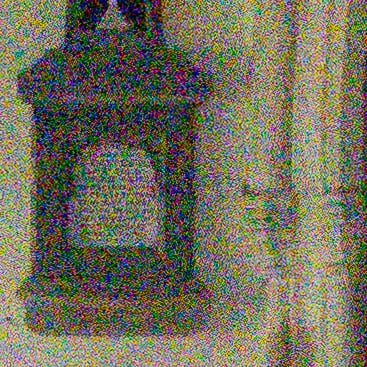 | 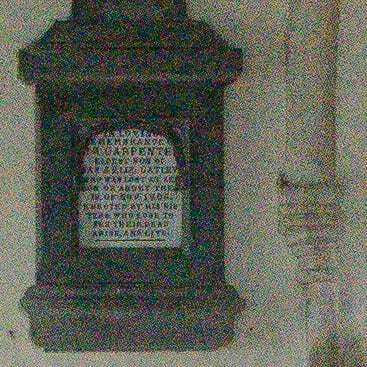 | |
f4 6400 ISO |
f5.6 6400 ISO | |
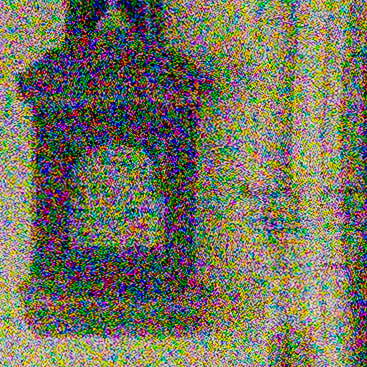 | 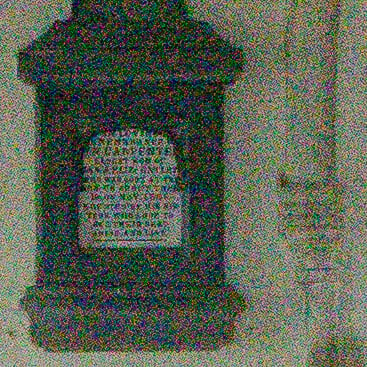 | |
f4 12800 ISO |
f5.6 12800 ISO | |
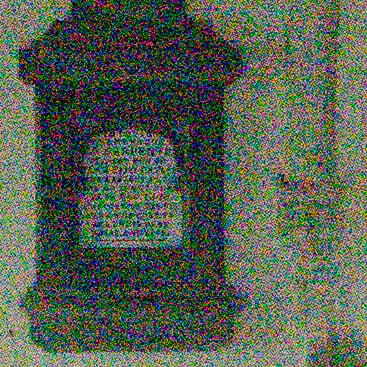 | ||
25600 ISO Not available |
f5.6 25600 ISO |
Olympus XZ-2 vs Nikon COOLPIX A Noise JPEG
The image above was taken with the Olympus Stylus XZ-2. I’d pre-tested both cameras to determine the aperture that delivered the best quality results, for the Stylus XZ-2 it was f4 with the COOLPIX A producing the best quality images at f5.6. At its base sensitivity setting of 100 ISO the COOLPIX A metered an exposure of 1/4. In order to produce an equivalent exposure on the XZ-2 I applied +0.3EV exposure compensation resulting in a shutter speed of 1/8 also at 100 ISO. As usual both cameras were otherwise left on their default settings. So how do the crops measure up? At its base 100 ISO sensitivity setting the Stylus XZ-2 produces relatively, but not completely noise-free images. If you look closely at the 100 ISO crop you’ll notice a slight texture to the wall as well as in the text panel on the memorial. It’s nothing too significant though and, even at 200 ISO, where it’s a little bit more visible, it’s really not worth worrying about, even at 100 percent reproduction. By 400 ISO, though, the noise has increased to such a degree that it’s already having an effect on small and medium sized image detail, the text isn’t nearly as clean in this crop as in the previous ones. And at 800 ISO the smaller text is becoming illegible. On larger sensor models 1600 ISO is often the watershed beyond which noise becomes a real issue at 100 percent viewing sizes, but for the Stylus XZ-2 that point is reached at 800 ISO. While 1600 ISO and 3200 ISO shots will look OK at smaller sizes, you can kiss goodby to all but the crudest detail, which is obscured by the increasing noise levels. Anything beyond 3200 ISO is really a bit of a prayer; it’s good to see Olympus not including a 25600 ISO just for the numbers, strictly speaking, 6400 ISO, as on the earlier XZ-1, would have made a more sensible upper limit. The crops from the Olympus XZ-2 start off pretty well by comparison with the COOLPIX A. Just a reminder once again that the 16 Megapixel APS-C sized sensor in the COOLPIX is both physically bigger as well as providing higher resolution than the 1/1.7in 12 Megapixel sensor in the Olympus XZ-2. Despite its 4 Megapixel higher resolution, the size difference should, in theory at least, provide the COOLPIX A with better noise performance than the Olympus XZ-2. The 100 ISO crop shows a little more texture than the COOLPIX one, but the difference is slim and the fine detail looks good. There’s a slight step up in the noisy texture at 200, the degree is more than the COOLPIX and starting from a slightly noisier base level. Even so, there isn’t a huge degree of difference between the 200 ISO crops. At 400 ISO however, the XZ-2 is stuggling to keep pace with the excellent noise characteristics of the larger sensor in the COOLPIX A, and by 800 ISO the game is well and truly up, with the XZ-2 crop showing a much higher level of noise and lower level of detail than the COOLPIX A crop. The text on the 1600 ISO crop from the XZ-2 is already illegible which rules it out for general purpose shooting. The XZ-2’s sensitivity range tops out at 12800 ISO , but you wouldn’t want to venture beyond 1600 ISO other than in exceptional circumstances. It is however important to remember the XZ-2 has a brighter aperture than the COOLPIX A, and when both are set to 28mm equivalent coverage, the XZ-2 enjoys a stop and a third greater light gathering power. So if both cameras were using their maximum apertures and the same shutter speed, then the Nikon COOLPIX A would be forced to select a sensitivity just over double that of the XZ-2. So in the spirit of fairness, you should shift the XZ-2 results down a notch in the table below so that the 100 ISO sample is next to the Nikon at 200 ISO and so on. That said though, the larger sensor of the COOLPIX A quickly eliminates the benefits of a brighter lens on its rival. To find out how much of a role processing plays in keeping noise at bay in these crops take a look at my Olympus Stylus XZ-2 RAW quality page to see just how much noise is present behind the scenes. Or head over to my Olympus Stylus XZ-2 sample images to see some more real-life shots in a variety of conditions.
|
Olympus Stylus XZ-2 results : Quality / RAW quality / Noise / RAW Noise |
